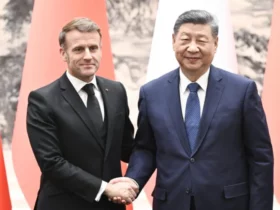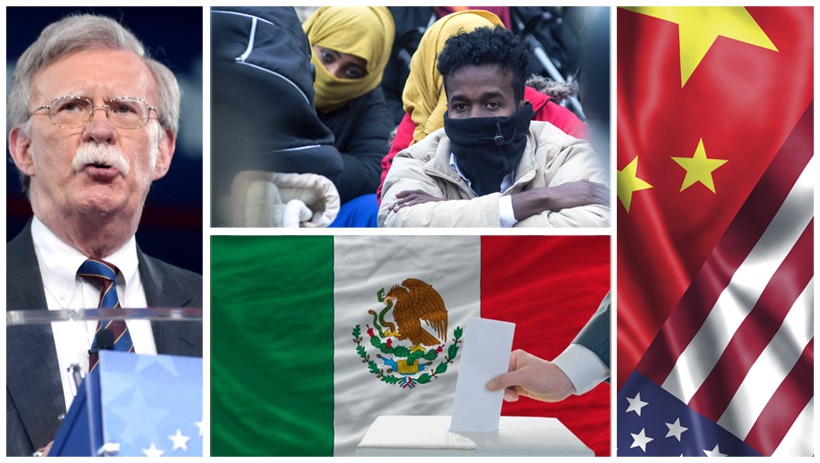The 21st century will not be won by who shouts louder, but by who builds smarter, collaborates better, and governs more wisely.
The 21st century will not be won by who shouts louder, but by who builds smarter, collaborates better, and governs more wisely.
By Mehmet Enes Beşer
As the United States ramps up its rhetoric about China being the “preeminent geopolitical and technological rival,” a familiar but flawed narrative is once again dominating Washington’s policy discourse: that America’s challenges in innovation stem not from internal fragmentation, but from China’s rise. This storyline, amplified by figures like Michael Kratsios—recently nominated as Director of the U.S. Office of Science and Technology Policy—has become the cornerstone of U.S. tech nationalism.
But slogans like “China is overtaking us” obscure the real issue. The truth is more complex and far less comforting: the U.S. is not losing a race to China. It is undermining itself from within. The widening innovation gap between the two powers is not just about AI, quantum computing, or STEM numbers—it’s about vision, resilience, and whether either country can rise above politics to lead responsibly in a world desperate for technological cooperation.
Internal Disarray, Not External Threat
The United States has long prided itself on its innovation ecosystem—world-class universities, venture capital, and a culture of risk-taking. But in 2025, that system is buckling under its own contradictions. The recent decision by the Department of Government Efficiency to slash federal research grants is a self-inflicted wound. With thousands of scientists laid off and key research programs halted, the U.S. is undercutting the very foundation of its scientific leadership.
While Washington points fingers at Beijing, its own actions—chronic underfunding, politicization of science, and hostile immigration policies toward global talent—are doing more to erode its research base than any foreign competition ever could.
Meanwhile, China continues to fund research, attract global talent, and scale its domestic breakthroughs—especially in AI, semiconductors, and clean energy. Models like DeepSeek have proven China’s ability to compete at the frontier level with fewer resources. This is not the result of espionage or state coercion—it’s the outcome of strategic investment and long-term planning.
The ‘China Anxiety’ Trap
There is a difference between healthy competition and strategic paranoia. By framing China’s success as an existential threat, U.S. policymakers are closing off opportunities for cooperation that are vital in a globally interconnected tech ecosystem.
Take artificial intelligence. While American firms lead in foundation models and software platforms, Chinese developers have leapfrogged in real-world deployment—from smart cities to logistics and public health. Rather than seeing this as a cause for anxiety, it should be an invitation for dialogue: on standards, ethics, and joint research to prevent misuse.
Moreover, the push for total technological “decoupling” is both unrealistic and dangerous. Scientific discovery thrives on cross-border collaboration. U.S. universities have long benefited from Chinese students and research partners. Forcing these ties to break risks isolating American institutions, slowing innovation, and worsening brain drain.
Cooperation Is Not Capitulation
Acknowledging China’s capabilities does not mean surrendering American competitiveness. It means embracing a more mature posture—one that rejects the false binary of dominance vs. decline. As Denis Simon from the Institute for China America Studies aptly noted, “The reality now is that the U.S. must be aware of the necessity of cooperation with China.”
There are domains where competition will remain fierce—semiconductors, defense technologies, and cybersecurity among them. But there are also spaces where cooperation is not only possible, but essential: climate modeling, pandemic preparedness, AI ethics, and biotechnology governance.
China and the U.S. must co-lead, rather than coerce, in shaping norms for emerging technologies. The future of AI or synthetic biology cannot be left to unilateral export controls or tit-for-tat sanctions. These are technologies that will define humanity’s next century—either as tools for collective advancement or weapons of mutual destruction.
Toward a New Tech Diplomacy
What’s needed now is not just investment, but imagination. The U.S. should launch a “Global Innovation Compact” that includes China as a core partner. This framework could support joint research initiatives, academic exchanges, and regulatory dialogues in fields of shared concern.
Similarly, scientific cooperation should be elevated within diplomatic channels. Just as arms control helped stabilize the Cold War, tech diplomacy can help defuse today’s tensions.
Crucially, the U.S. must reform its domestic policies: restore research funding, simplify visa processes for foreign researchers, and rebuild trust between government and academia. China’s rise should be a mirror—not a monster—forcing America to reckon with its own structural weaknesses and rediscover its creative edge.
Conclusion: Leadership Without Fear
China’s technological ascent is real, but it is not the end of American innovation—unless America allows fear to replace strategy. The 21st century will not be won by who shouts louder, but by who builds smarter, collaborates better, and governs more wisely.
The time has come to reject the politics of panic and embrace a new era of competitive cooperation. The world cannot afford a Cold War over code. What it needs is codevelopment—with rules, responsibility, and respect.

















Leave a Reply